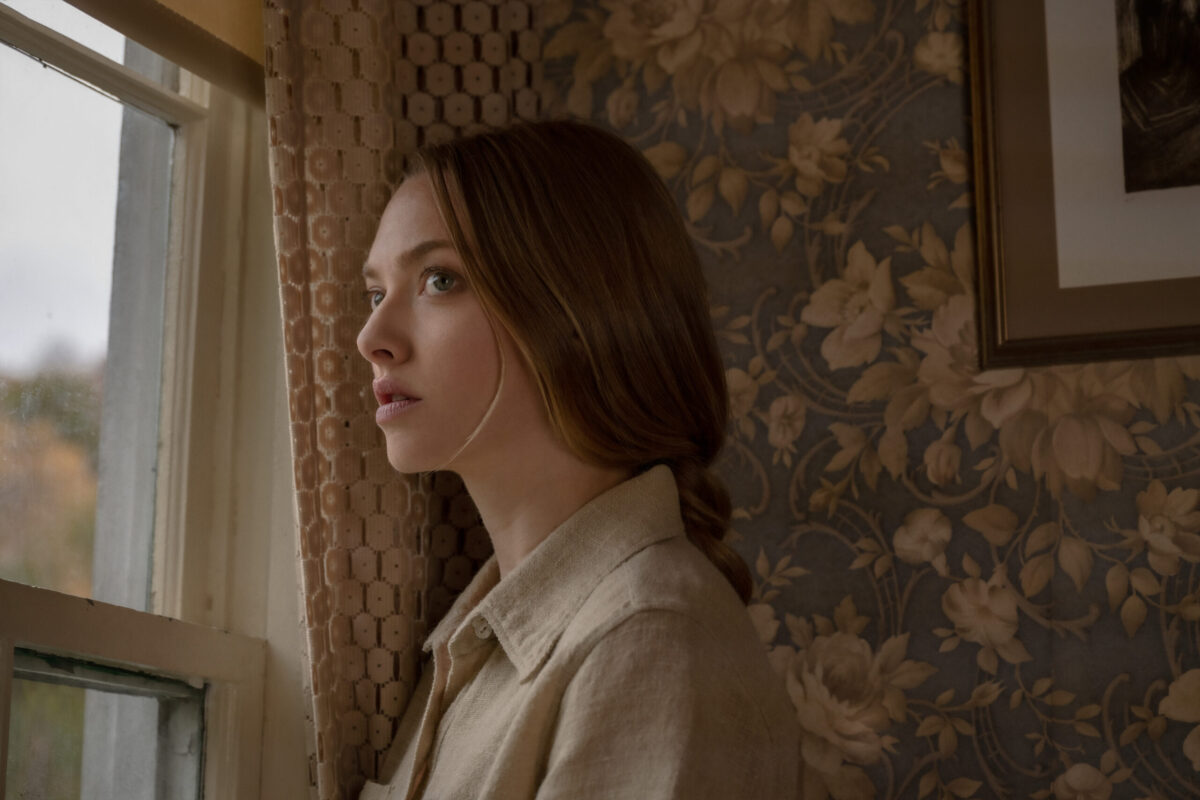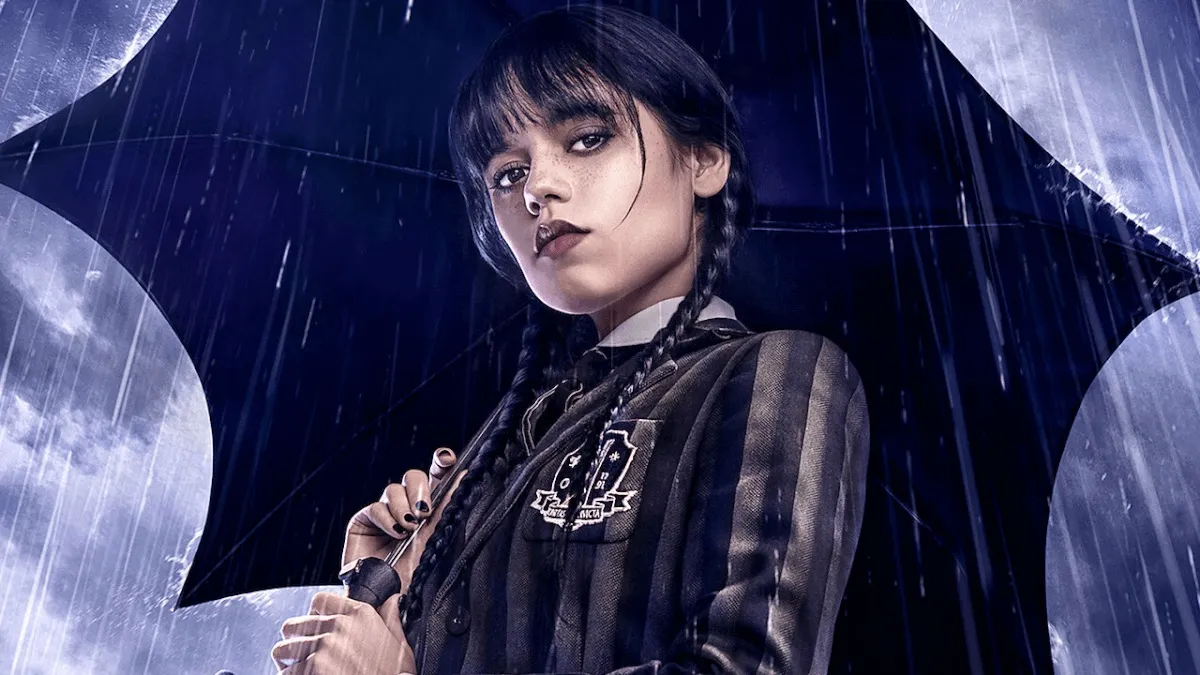Things Heard & Seen is a Netflix film that brings to life the world of Elizabeth Brundage’s All Things Cease to Appear and the alluring mystery of the Hudson River Valley. The setting for stories like The Headless Horseman and other frightening tales, it’s always forcing people to wonder how this little area of New York seems to remain timeless.
Talking with writers and directors Shari Springer Berman and Robert Pulcini, they brought influences from their own time in the Hudson River Valley, as well as Brundage’s story, to life in a seemingly timeless movie with Things Heard & Seen.
THE MARY SUE: I watched it today and I know it’s based on a novel, but I really liked that it felt a lot like Amityville Horror, but like one I can digest versus just being terrified the entire time. It was easy to kind of get into the movie and flow with it and understand these characters and all their motivations. And so I wanted to know what inspired you both from the original novel, as well as like when you were bringing it to life on screen?
SHARI SPRINGER BERMAN: Well, we live in New York City, but we have a house up in the country and up in the Hudson Valley, which is where this story takes place. And we always wanted to make a movie.. the Hudson Valley’s like this very dramatic place. It’s the weather, it’s really dramatic. The sky, it’s beautiful, but it’s big. And it can change on a dime, the weather. You know, Washington Irving wrote the Headless Horseman about that area. So it’s been like sort of an inspiration for scary tales for a long time. And one day Bob was reading the local newspaper and saw about a woman who lived in our town who had written a book, which is the book that this is based on All Things Cease to Appear. And he read the book and loved it and told me to read it. And in the interim, the book got really successful and started getting fantastic reviews. And so Bob, you know, and I went after the book and got in touch with Elizabeth Brundage, the writer. And that was how we got to do the story.
THE MARY SUE: And, Robert, when you’re bringing a story like this to life on screen, what are challenges that kind of don’t exist in other genres?
ROBERT PULCINI: I think the biggest challenge was how much information do you want the audience to have at what particular point, you know? How do you want the audience to feel about this character right now in the movie? And how do you want them to feel about this character 30 minutes into the movie and how do you want the audience to feel about the situation at this point in the movie and how do you want that to change? So the novel for me was very skillful in the way it gave you information. And I wanted the movie to have the same precision with that detail. That was very tricky.
THE MARY SUE: Yeah. And I liked it a lot. Like, I mean, I’ll admit, I’m maybe dumb, but I didn’t realize it was set in a different time period until I heard the Carter administration. And I was like, “Oh, wait, that’s right. There are no cell phones. And I haven’t seen a single one and like, they’re all in different clothing,” but like my brain just didn’t correlate. It was a different time period.
ROBERT PULCINI: (laughs) That was intentional, you know, that was intentional. We really wanted it to feel because there’s a timelessness to that area. You know, I go on some of the back roads up there and it looks like the 1800s, you know, with their dirt roads and there are farmers up there living a really tough life.
SHARI SPRINGER BERMAN: Wearing the same kind of clothing that they would have worn in 1950…
ROBERT PULCINI: I look at those paintings that, you know, are sprinkled throughout the movie of the Hudson River Valley and Hudson River school painters. It looks exactly the same as what I saw the day before when the sky broke and when I went down to the Hudson River to look at the water. So I think there’s a kind of continuum in time up there, you kind of get lost, that we wanted it to feel present even though it’s not.
THE MARY SUE: Yeah. And I think, my next question is so when you’re dealing with that, and it is in a different era, is it an advantage because there are moments where she has to go to a library to look up news stories on a computer versus like, “Okay, I’m just going to Google this”? And so when you’re writing that, is that something that you get to then use to your advantage? Or is it a disadvantage?
SHARI SPRINGER BERMAN: It’s definitely an advantage, especially in this story. And I think I give a lot of credit to horror movie writers and directors who set things…And I mean, I guess you could find horror and in technology, and that’s the key is to turn technology into something dreadful. But technology, like, it makes it very easy to just pick up your phone and ask for help or Google somebody, and you know what happened. Whereas in 1980, which wasn’t that long ago, none of that existed. If you had to go… it was really funny when we had to find the microfilm or microfiche machine that it’s like for her to look at old newspapers, it was, it’s such a process versus like looking on your phone and one second you have it.
ROBERT PULCINI: And when you’re gaslighting someone information is not your ally, you know, if that’s your intention. And the movie was set in 1980, I think though the writer saw that as a transitional time in male-female relationships. So she wanted to set it then. And, I think there’s this main character who is deprived of the information that she needs that probably wouldn’t be deprived of her if it was set currently.
—
Things Heard & Seen is available now on Netflix.
(image: Anna Kooris/NETFLIX © 2020)
Want more stories like this? Become a subscriber and support the site!
—The Mary Sue has a strict comment policy that forbids, but is not limited to, personal insults toward anyone, hate speech, and trolling.—










Published: May 12, 2021 05:48 pm